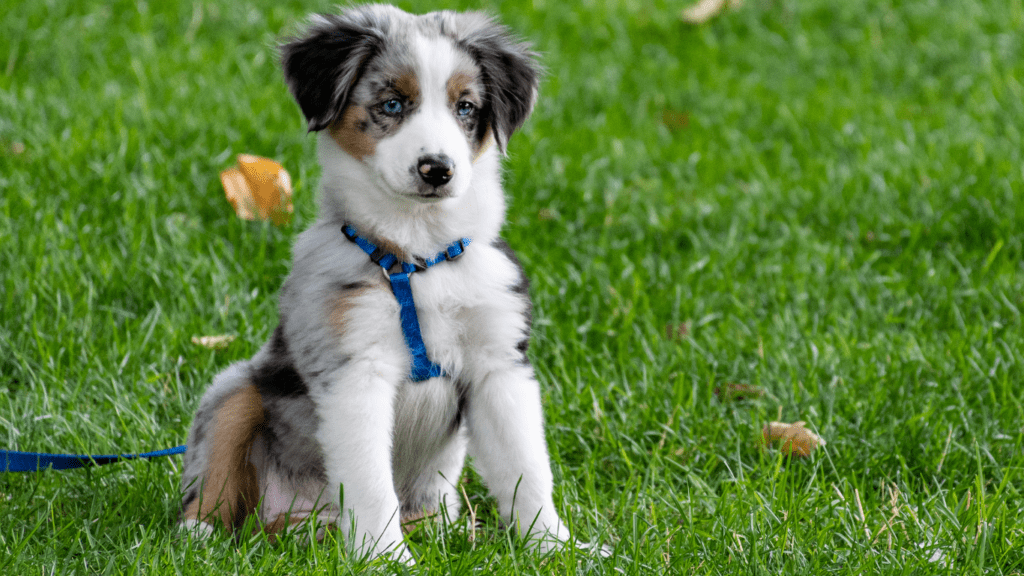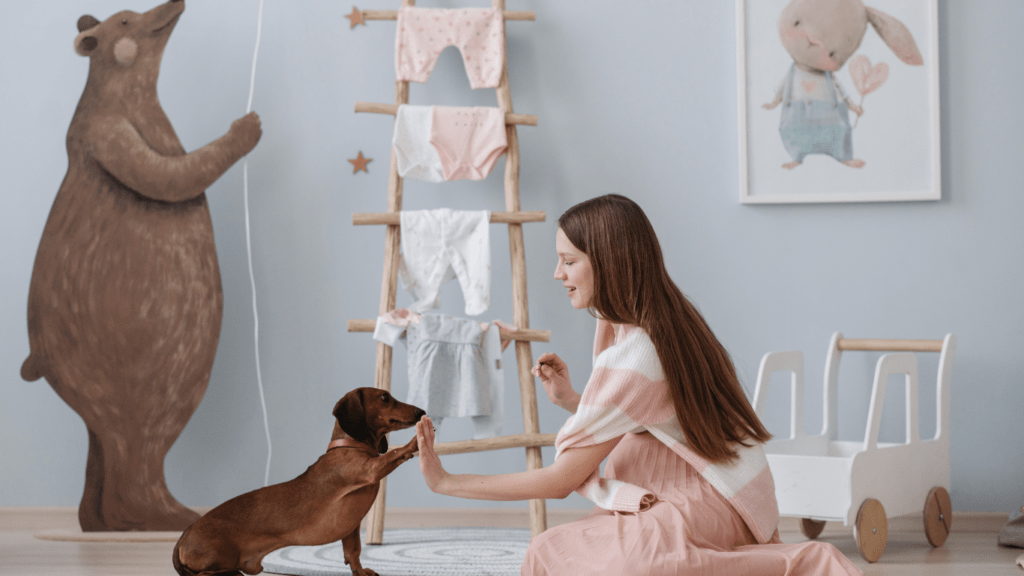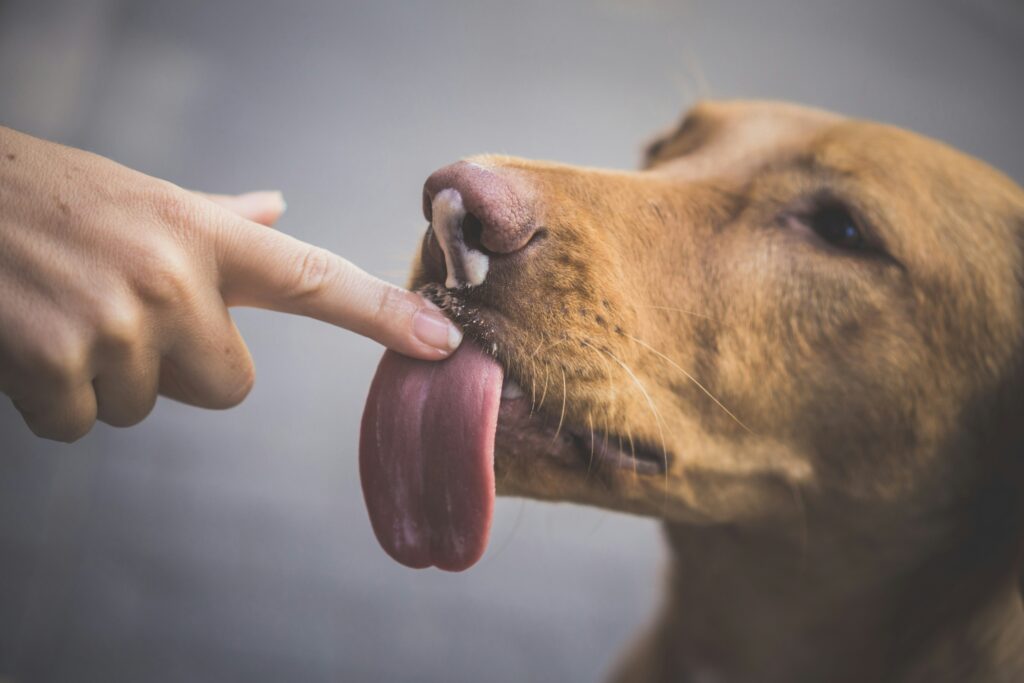Understanding Puppy Behavior
Puppy behavior can sometimes seem confusing. New environments may overwhelm a puppy, leading to behaviors like chewing and excessive barking. Puppies explore the world through their senses, especially taste and smell. Chewing helps teething puppies relieve discomfort, much like babies.
Recognizing Typical Puppy Behavior
Puppies often display natural behaviors. Chewing, biting, barking, and whining are expected. Chewing shoes or furniture occurs because puppies explore objects with their mouths. Barking or whining can indicate boredom, anxiety, or a need for attention.
Importance of Early Socialization
Socialization shapes a puppy’s behavior. Introducing puppies to diverse environments, people, and animals helps them become well-adjusted. A well-socialized puppy can handle unfamiliar situations with confidence. Exposure to various stimuli during the critical socialization period (3-14 weeks) reduces fear-related issues later.
Reading Puppy Body Language

Understanding a puppy’s body language aids communication. Tail wagging, ears positioning, and facial expressions provide insight into their feelings. For example, a wagging tail can signify happiness, while tucked ears might indicate fear or submission. Recognizing signs of stress or discomfort can prevent behavioral issues.
Developing a Routine
A consistent routine contributes to a well-behaved puppy. Regular feeding, playtime, and bathroom schedules help a puppy understand what’s expected. Setting boundaries and enforcing rules from the start establishes a foundation for good behavior.
Using Positive Reinforcement
Positive reinforcement encourages desired behaviors. Rewarding a puppy with treats, praise, or playtime motivates them to repeat good behaviors. Consistency in rewarding positive actions helps puppies learn quickly and efficiently.
Avoiding Common Mistakes
Avoiding common training errors is crucial. Inconsistent rules, using punishment, and failing to socialize a puppy can lead to behavioral problems. Instead, focus on positive reinforcement and consistent training methods to nurture a well-behaved puppy.
Understanding puppy behavior forms the cornerstone of effective training. Knowing why puppies act a certain way allows for better communication and guidance through their development stages.
Creating a Consistent Routine
Creating a consistent routine is vital for training a well-behaved puppy. A structured schedule helps puppies adjust to their new environment and understand what is expected of them.
Establishing a Feeding Schedule
A consistent feeding schedule ensures your puppy knows when to expect meals, which can aid in potty training. Feed your puppy at the same times each day, usually three to four times, for puppies under six months. Measure food portions according to the puppy’s age, weight, and breed requirements. This predictability helps regulate their digestion, making outdoor bathroom trips more predictable and successful.
Setting Sleeping Patterns
Establish clear sleeping patterns to give your puppy adequate rest. Puppies need around 18 to 20 hours of sleep daily. Create a designated sleeping area, such as a crate or bed, and place your puppy there at set times, including a bedtime. Avoid playing with the puppy late at night to prevent restlessness. Keeping sleep and wake times consistent helps in stabilizing their internal clock and reduces instances of night-time disturbances.
Training Basics
Establishing a strong foundation in your puppy’s training journey sets the stage for long-term success. Incorporate these essential elements to foster positive behaviors.
House Training Techniques
House training your puppy is essential to prevent indoor accidents. Start by establishing a regular feeding schedule, which helps predict when your puppy will need to relieve itself. Take your puppy outside frequently, especially after meals, naps, and play sessions. Praise your puppy with treats and verbal affirmations immediately after they relieve themselves outside. Limit your puppy’s indoor space using baby gates or crates, encouraging them to view the crate as their den. Clean any indoor accidents thoroughly using an enzymatic cleaner to eliminate lingering odors that might attract your puppy back to the same spot.
Socialization
Early socialization is crucial for a well-adjusted puppy. Expose your puppy to various environments, sounds, and experiences such as car rides, meeting new people, and encountering other animals. Schedule playdates with vaccinated puppies and introduce your puppy to different surfaces like grass, concrete, and sand. Enroll in puppy socialization classes if possible, where supervised interactions with other puppies and people can occur. Always ensure these experiences are positive by using treats and praise, building your puppy’s confidence and reducing fear-related behaviors later in life.
Basic Commands
Teaching basic commands lays the groundwork for effective communication with your puppy. Begin with simple commands like “sit,” “stay,” and “come.” Use a consistent command word paired with a hand signal for clarity. Reward your puppy with treats and praises promptly when they obey a command. Keep training sessions short, around 5-10 minutes, to maintain your puppy’s attention and enthusiasm. Gradually increase the complexity of commands and introduce distractions to ensure your puppy comprehends commands in various situations. Prioritize patience and consistency, and avoid punishment, focusing on reinforcing positive behaviors instead.
Positive Reinforcement Techniques
Positive reinforcement remains a cornerstone of effective puppy training, encouraging desired behaviors through rewards.
Treats and Rewards
Treats and rewards serve as powerful motivators for puppies. Use small, tasty treats that your puppy can quickly eat, such as pieces of chicken or commercially available training treats. Always reward immediately after the desired behavior to reinforce the connection between the action and the reward. Vary treats to maintain interest and motivation. Additionally, use alternative rewards like toys or a few minutes of playtime for a well-rounded approach. Avoid overfeeding by keeping treat sizes small and adjusting daily meal portions accordingly.
Verbal Affirmations
Verbal affirmations are essential to puppy training. Use a cheerful, enthusiastic tone when praising your puppy, as they respond well to the energy and emotion in your voice. Phrases like “Good job!” or “Well done!” can reinforce positive actions. Always pair verbal praise with treats or playtime to strengthen the positive association. Consistency is key, so use the same phrases every time your puppy performs a desired behavior. Avoid negative tones or harsh words; these can confuse or scare your puppy, hindering training progress.
Addressing Common Behavioral Issues
Training a well-behaved puppy involves recognizing and addressing common behavioral issues early.
Chewing and Biting
Puppies naturally chew and bite to explore their world and relieve teething pain.
- Provide plenty of chew toys to deter destructive chewing.
- Encourage them to use the toys by praising them when they do.
- If a puppy bites during play, yelp loudly and stop playtime immediately.
This teaches that biting ends fun times.
Excessive Barking
Excessive barking can be disruptive. Identify the cause first: boredom, fear, or attention-seeking. If boredom is the problem, increase exercise and mental stimulation through toys and training. For fear-based barking, gradually desensitize the puppy to the trigger. If the barking seeks attention, ignore it until they stop, then offer praise and a treat. Consistent responses teach appropriate behavior.
Advanced Training Tips
Teaching Advanced Commands
Adding advanced commands like “heel,” “leave it,” and “place” enhances your puppy’s obedience. Start with “heel” by holding a treat at your side and walking forward. Reward your puppy when they walk beside you without pulling. For “leave it,” place a treat in front of them and use the command. Reward your puppy when they ignore the treat. “Place” can be taught using a mat or bed; guide your puppy onto the object and reward them when they stay on it.
Using Hand Signals
Hand signals improve communication and are helpful in noisy environments. Pair a hand signal with a verbal command during initial training. For instance, use an open palm for “stay” or a downward motion for “sit.” Repeat the hand signal along with the command until your puppy responds consistently to the hand signal alone.
Practicing Impulse Control
Impulse control prevents unwanted behaviors like jumping or grabbing objects. Use exercises like “wait” and “settle.” For “wait,” hold a treat and slowly move it towards your puppy while telling them to wait. Reward them when they remain still. “Settle” involves having your puppy lie down calmly and rewarding them for staying relaxed.
Socializing in New Environments
Expose your puppy to various environments to build their confidence. Take them to places with different noises, surfaces, and people. Reward calm behavior to encourage a positive association with new experiences. Gradual exposure helps prevent fear and anxiety in unfamiliar settings.
Incorporating Mental Stimulation
Include mental stimulation activities like puzzle toys, scent games, and obedience drills. Rotate toys to keep your puppy engaged. Hide treats around the home and encourage them to find them, enhancing their problem-solving skills. Regular obedience drills reinforce commands and keep their mind active.
Using Structured Playtime
Structured playtime provides an outlet for your puppy’s energy while reinforcing training. Use toys to practice commands like “drop it” and “fetch.” Engage in games that require your puppy to follow instructions. This balances exercise with obedience practice, contributing to a well-behaved dog.
Reinforcing Good Behavior
Reinforcing good behavior strengthens learned commands. Use positive reinforcement like treats, praise, and play. Immediate rewards ensure your puppy associates the behavior with the reward. Consistently reinforcing commands and desired behaviors helps maintain them over time.
Addressing Behavioral Setbacks
- Addressing setbacks ensures continued progress in training.
- Identify the cause of the behavior, such as stress or lack of exercise, and adjust the training approach.
- Revisit basic commands if needed and gradually reintroduce advanced commands.
- Patience and consistency are key to overcoming setbacks and solidifying training.


 Founder & Pet Wellness Advocate
As the visionary founder of Pet Paw Shack, Kimberliene Sabinin is passionate about helping pet owners provide the best care possible for their furry companions. With a background in veterinary science and animal nutrition, Kimberliene brings years of experience in promoting pet health, safety, and well-being. Her mission is to empower pet owners with practical knowledge about proper nutrition, behavior training, and overall pet wellness.
Founder & Pet Wellness Advocate
As the visionary founder of Pet Paw Shack, Kimberliene Sabinin is passionate about helping pet owners provide the best care possible for their furry companions. With a background in veterinary science and animal nutrition, Kimberliene brings years of experience in promoting pet health, safety, and well-being. Her mission is to empower pet owners with practical knowledge about proper nutrition, behavior training, and overall pet wellness.
